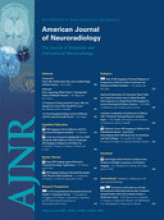Abstract
SUMMARY: Molecular imaging is aimed at the noninvasive visualization of the expression and function of bioactive molecules that often represent specific molecular signatures in disease processes. Any molecular imaging procedure requires an imaging probe that is specific to a given molecular event, which puts an important emphasis on chemistry development. In MR imaging, the past years have witnessed significant advances in the design of molecular agents, though most of these efforts have not yet progressed to in vivo studies. In this review, we present some examples relevant to potential neurobiologic applications. Our aim was to show what chemistry can bring to the area of molecular MR imaging with a focus on the 2 main classes of imaging probes: Gd3+-based and PARACEST agents. We will discuss responsive probes for the detection of metal ions such as Ca, Zn, Fe, and Cu, pH, enzymatic activity, and oxygenation state.
Abbreviations
- BBB
- blood-brain barrier
- BOLD
- blood oxygen level−dependent
- bpy
- bipyridine
- C
- carbon
- Ca
- calcium
- CEST
- chemical exchange saturation transfer
- CO3
- carbonate
- Cu
- copper
- DTPA
- diethylene-triamine pentaacetic acid
- DOTA
- 1,4,7,10-tetraaza-1,4,7,10-tetrakis(carboxymethyl)cyclododecane
- Eu
- europium
- Fe
- iron
- Gd
- gadolinium
- H
- hydrogen
- HSA
- human serum albumin
- kex
- exchange rate
- M
- metal ion
- Mn
- manganese
- N
- nitrogen
- O
- oxygen
- OH
- hydroxide
- PARACEST
- paramagnetic CEST
- PO4
- phosphate
- q
- number of water molecules coordinated to Gd3+
- T1,2e
- electron spin relaxation times
- TPEN
- N,N,N′,N′-tetrakis(2-pyridylmethyl)ethylene-diamine
- tpps
- 5,10,15,20-tetrakis-(p-sulfonatophenyl porphinate
- tpy
- terpyridine
- Yb
- ytterbium
- Zn
- zinc
- tauR
- reorientational correlation time of the molecule
- Copyright © American Society of Neuroradiology
Indicates open access to non-subscribers at www.ajnr.org












